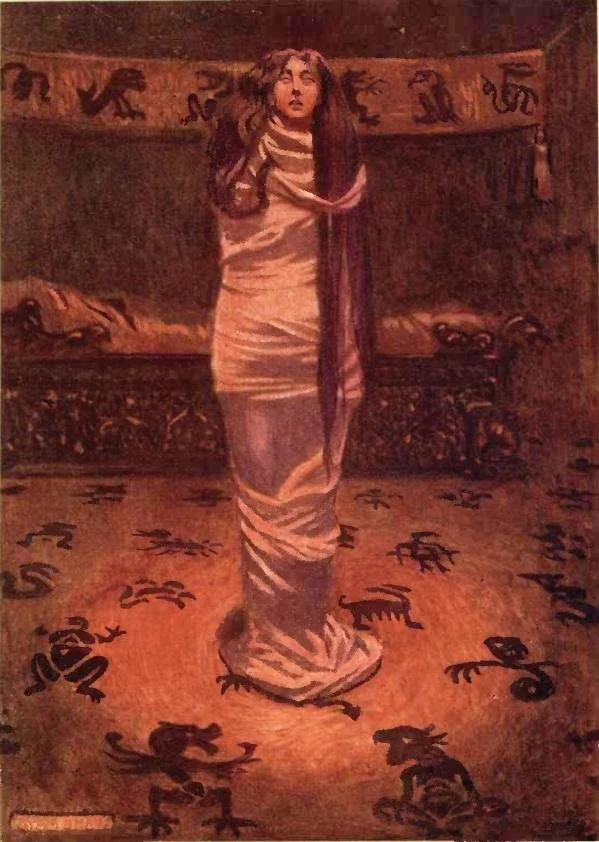About the film
Edgar Allan Poe’s “Ligeia” is a Gothic tale of love, loss, and the supernatural. First published in 1838 in Philadelphia’s The American Museum magazine, the short story has beguiled readers for nearly 200 years. Now we’re bringing it to the screen.
Our adaptation strives to stay true to the original, while weaving in additional plot structure and characterization. Set in 1840s Philadelphia, The Curse of Ligeia invites viewers to witness one fateful night of terror, as struggling writer Graham Corbett and his wife Lady Rowena are forced to contend with the ghost of Graham’s deceased first wife, Lady Ligeia.
Ligeia the story
"Ligeia" is an early short story by American writer and poet Edgar Allan Poe. The style of writing is “stream of consciousness” and involves an unnamed narrator who shares a tale of love, loss, death, and the supernatural.
In the story, the narrator shares how he fell in love and married Ligiea, a young woman whose beauty was so captivating he can’t even remember how or where he met her. During their marriage, Ligeia falls ill and she composes a poem titled the "The Conqueror Worm", which addresses themes of mortality and death. Tragically, Ligeia dies soon after.
Shortly after Ligeia’s death, the narrator marries a woman named Lady Rowena, though their marriage is fraught with conflict. He develops an opium addiction and fails to deliver his promise to Rowena of a lavish life. One night, Rowena becomes mysteriously ill and dies in a similar manner as Ligeia.
The distraught narrator stays with her body overnight and, to his horror, watches as Rowena slowly comes back from the dead. Spiraling from his opium use, he’s unsure if it is real or a hallucination. At the end, it is revealed she has transformed into the ghost of Ligeia.
Ligeia the adaptations
While not as well-known as some of Poe’s other works such as The Raven, The Tell-Tale Heart, or The Murders in the Rue Morgue, the short story of Ligeia remains a beloved Poe story and has been given the Hollywood treatment before.
Fans of classic horror may be familiar with Vincent Price’s adaptation The Tomb of Ligeia produced in 1964. Most recently, Mike Flanagan’s The Fall of the House of Usher, references Ligeia by naming the pharmaceutical drug manufactured by the Fortunato family, Ligadone.
Our adaptation strives to stay true to the original text as possible, but with some adjustments to make it feasible as a short film. Our film takes viewers to the time and place where Ligeia was written. We have set The Curse of Ligeia in early 19th century Philadelphia to honor the period of time that Poe lived in the City of Brotherly Love. Screenwriter and actor John Reshetar has provided plot structure and characterization to the existing tale and created a storyline that finds its players confronting themes of love, grief, and facing their own mortalities.



